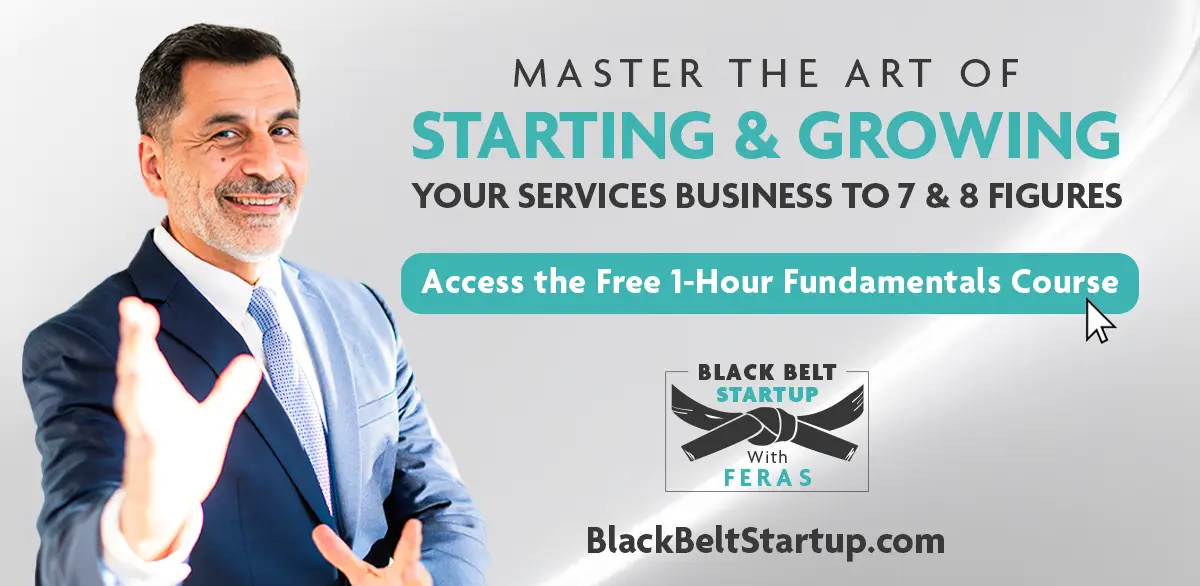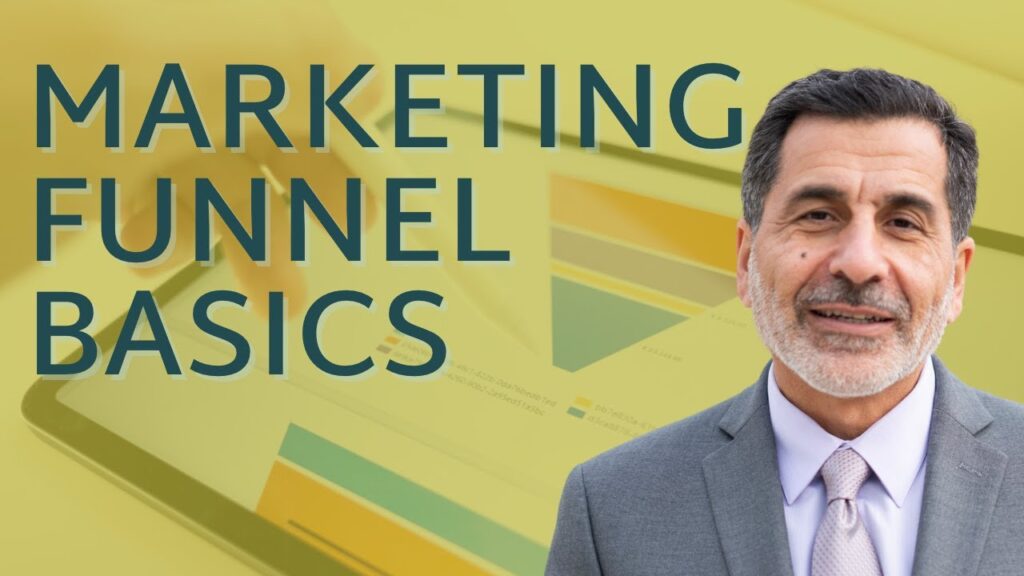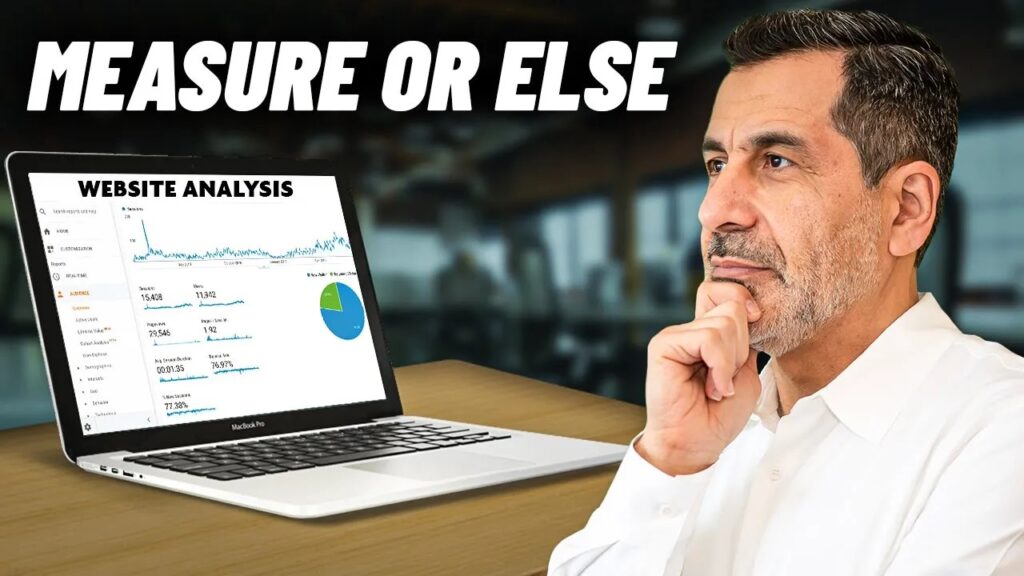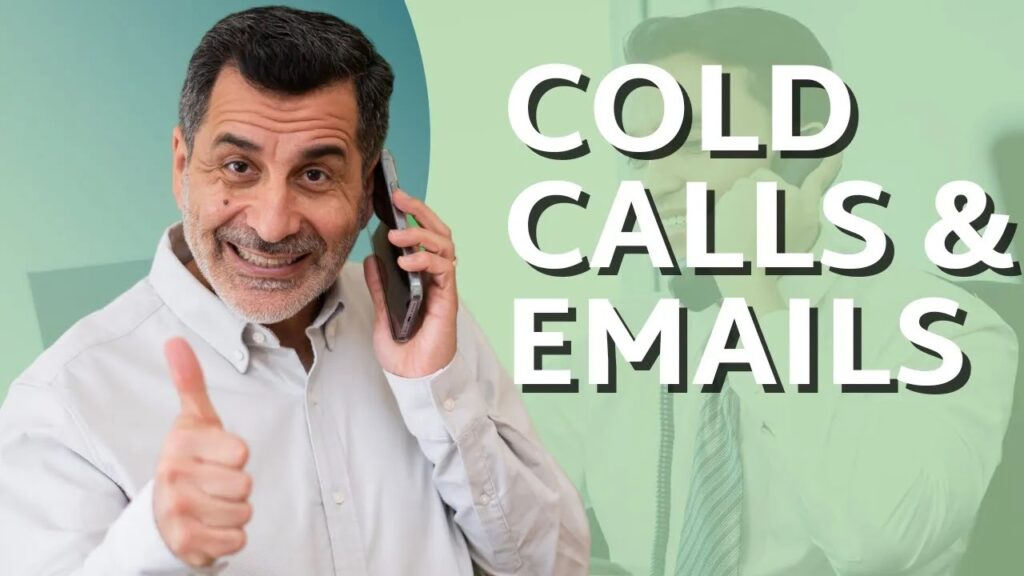What Is the PESO Model (Paid, Earned, Shared, Owned Media) and How to Use it to Market Your Business

When I started my first business, all the marketing jargon – peso model, paid vs. owned, shared vs. earned, media, channels, etc. – all felt like a foreign language.
I wasn’t trying to become a marketing expert; I just needed to get leads without wasting money. But figuring that out took over a year of trial and error (and plenty of frustration).
Eventually, I cracked the code and even wrote a book on digital marketing and analytics.
Now, I want to help you skip the guesswork, save time, and understand the key marketing concepts that matter. By learning how marketing works, you’ll be able to choose the right approach at the right stage of your business without the confusion or wasted effort.
Marketing Isn’t That Simple
“Marketing is all about making people want what you’ve got!” That’s the funny, and surprisingly accurate definition ChatGPT came up with when I asked.
But if you’ve ever tried marketing your small business, you know it’s not as easy as it sounds. That’s where the PESO model comes in. Paid, earned, owned, and shared media each play a unique role in making your business irresistible.
What Is the PESO Model?
The PESO model is a simple way to think about marketing that actually works. Instead of guessing which strategies and channels will bring in leads, this framework helps you choose the right mix of Paid, Earned, Shared, and Owned media based on your business stage and resources.
| Media Type | Main Benefit |
| Paid Media | Helps you get seen fast. |
| Earned Media | Builds credibility. |
| Shared Media | Spreads your message. |
| Owned Media | Gives you full control of your brand. |
When used together, they create a marketing system that brings in leads without wasting time or money.
PESO Model Usually Happens as P-O-S-E or O-P-S-E
I’m referencing “PESO” as an established acronym but need to point out that it does not represent the typical sequence in which new companies experience these different types of media, which is as follows:
- Paid
- Owned
- Shared
- Earned
Or sometimes:
- Owned
- Paid
- Shared
- Earned
Keep this order in mind as we explore the following sections.
What Is Paid Media?
Paid media refers to any marketing efforts where you pay to promote your brand, products, or services. It’s an essential component of the PESO model because it provides immediate visibility and allows you to target specific audiences effectively.
Examples of paid media include:
- Search ads: Pay-per-click (PPC) ads that show up on Google, Bing, and other search engines. These ads help businesses reach people who are actively searching for their services.
- Display ads: Banner and image-based ads that appear on websites and apps through ad networks like Google Display Network. They target users based on their interests and browsing history.
- Social media ads: Paid ads on platforms like Facebook, Instagram, LinkedIn, and Twitter (X). These allow businesses to target specific audiences based on their age, location, interests, and online behavior.
- Sponsorships: Paying to have your brand featured at events, in influencer content, or as part of branded partnerships. This can help increase visibility and trust.
- TV/Radio/Print ads: Traditional ads on television, on radio, or in newspapers and magazines. These are great for reaching local and larger audiences to build brand awareness.
Paid media is often the entry point for businesses seeking to quickly boost their visibility and attract new customers.
Advantages of Paid Media
Paid media offers several advantages that make it a powerful tool in your marketing arsenal:
- Immediate results: Paid campaigns can generate instant traffic and visibility for your business.
- Precise targeting: Platforms like Google and Facebook allow you to target specific demographics, locations, and interests, ensuring your ads reach the right audience.
- Scalability: You can adjust your budget to scale your campaigns based on performance and business needs.
- Measurable ROI: With detailed analytics, paid media provides clear insights into the effectiveness of your campaigns, enabling data-driven decisions.
These benefits make paid media an indispensable part of your overall marketing strategy, especially for businesses looking to grow quickly.
Challenges of Paid Media
Despite its advantages, paid media comes with its own set of challenges that businesses must navigate:
- Cost: Running paid campaigns can be expensive, especially in competitive industries where ad costs are high.
- Dependency on budget: The success of paid media campaigns is directly tied to your spending. When the budget runs out, the visibility follows suit.
- Ad fatigue: Over time, audiences may become less responsive to ads, requiring constant creativity and optimization (or higher budgets) to maintain effectiveness.
- Short-term impact: Unlike earned or owned media, paid media provides short-term results and does not build lasting assets for your brand, unless you have the marketing budget to sustain ongoing campaigns.
Understanding these challenges is crucial to managing expectations and ensuring paid media is used effectively as part of a balanced PESO strategy.
What Is Earned Media?
Earned media refers to the attention and recognition your business receives from external sources, without paying for it.
It’s the result of your brand’s reputation, efforts, and value being acknowledged by others, such as media outlets, influencers, or your customers.
Examples of earned media include:
- Press mentions: Articles or news coverage about your business in media outlets.
- Guest articles: Thought leadership pieces or expert contributions published on other platforms.
- Podcast features: Being invited as a guest to share insights on industry-specific podcasts.
Earned media is like a glowing referral—it carries the weight of impartiality and trust, making it one of the most valuable types of media.
Advantages of Earned Media
Earned media offers unique advantages that make it an essential component of the PESO model:
- Credibility: Because it comes from third-party sources, earned media carries more trust and authenticity than self-promotion.
- Authority: Being recognized by reputable outlets or influencers positions your brand as a leader in your industry.
- Amplification: Earned media often has a ripple effect, reaching new audiences through shares, recommendations, and viral buzz.
- Cost-Effective exposure: Unlike paid media, earned media doesn’t typically require an advertising budget because it stems from your brand’s organic impact. However, you may sometimes need to invest in professional PR services or pitch experts to help get noticed, which introduces an element of cost.
These benefits make earned media a powerful way to build trust and expand your reach.
Challenges of Earned Media
Despite its advantages, earned media is one of the most challenging types of media to achieve:
- Initial Effort: Without a strong foundation in owned or shared media, it can be difficult to attract the attention of media outlets or influencers.
- Unpredictability: You can’t control when or how earned media will happen, making it less reliable than other media types.
- Consistency: Maintaining a steady stream of earned media requires ongoing efforts to create newsworthy content or stories.
- Limited Control: Once your brand is in the hands of others, you can’t control the narrative or how your message is presented.
Even though it’s hard to get and has some downsides, it’s worth it. The credibility and brand authority you gain make it a smart move.
What Is Shared Media?
Definition and Examples of Shared Media
Shared media refers to content and conversations that are distributed and amplified through social media platforms, communities, and user-generated interactions.
Unlike paid or owned media, it thrives on engagement, collaboration, and sharing among your audience.
Examples of shared media include:
- LinkedIn posts: Professional updates and content shared by your brand or followers.
- Facebook updates: Content distributed through shares, likes, and comments on your posts.
- Community forums: Discussions on platforms like Reddit or niche-specific forums where your brand is mentioned or engaged.
- User-generated content (UGC): Photos, videos, or reviews created by customers and shared publicly.
- Retweets and shares: Social amplification of your content by followers or fans.
This type of media relies on the power of community and interaction, making it a vital element of the PESO model.
Shared Media Means Shared in Two Ways
The shared in shared media represents two different concepts:
- You share content on platforms that you don’t own
- These platforms facilitate sharing of your content by other users of the platform
So when you hear shared media, it means one or the other or both.
Advantages of Shared Media
Shared media offers several key benefits that make it a powerful tool for building brand awareness and engagement:
- Amplified Reach: When your content is shared by others, it reaches a broader audience without requiring additional investment.
- Community Engagement: This type of media fosters conversations and connections, helping to build a loyal community around your brand.
- Cost-Effective: Leveraging social sharing allows your content to gain visibility without the need for paid promotion.
- Real-Time Feedback: Shared media provides instant insights into how your audience perceives and interacts with your content.
By encouraging sharing and collaboration, it helps brands extend their reach organically and foster genuine connections with their audience.
Challenges of Shared Media
While shared media offers significant advantages, it also comes with challenges that businesses need to address:
- Platform Dependency: Relying on platforms like Facebook or LinkedIn means you’re subject to their algorithms, rules, and changes.
- Loss of Control: Once content is shared, it’s in the public domain, and the narrative can shift based on user interpretation or interaction.
- Negative Publicity: Shared media can amplify not only positive content but also negative reviews, criticism, or misunderstandings.
- Consistency: Keeping up with its fast-paced nature requires constant monitoring, engagement, and fresh content.
Despite these challenges, shared media is a dynamic and essential part of modern marketing, helping brands harness the power of community and interaction.
What Is Owned Media?
Definition and Examples of Owned Media
Owned media refers to any marketing asset or platform that your business has full control over. Unlike paid or earned media, owned media is entirely within your hands, allowing you to shape the message and engage with your audience on your terms.
Examples of owned media include:
- Website: Your business’s primary digital presence, showcasing your brand, products, and services.
- Blogs: Articles and insights published on your company’s website.
- Email newsletters: Direct communication with your audience through curated email campaigns.
- Videos: Content self-hosted or hosted on platforms like Vimeo or embedded directly on your website.
- E-books and case studies: Downloadable resources that position your brand as a thought leader.
Owned media is the foundation of your marketing strategy, providing a central hub for all other media types to connect and amplify.
Advantages of Owned Media
Investing in owned media offers several long-term benefits for your business:
- Complete control: You dictate the messaging, design, and content without relying on third parties.
- Cost-effective: While there’s an initial investment in time and resources, owned media requires no ongoing ad spend.
- Long-term branding: Consistent content builds authority and trust over time, solidifying your brand identity.
- Audience engagement: Owned media provides a direct channel to communicate with your audience, fostering stronger relationships.
By establishing a strong owned media presence, your business can create a sustainable and scalable marketing strategy that pays dividends over the long haul.
Challenges of Owned Media
While owned media is a powerful asset, it comes with its own set of challenges:
- Time investment: Creating high-quality content, whether blogs, videos, or newsletters, requires significant time and effort.
- Skill requirements: Effective owned content demands expertise in writing, design, SEO, and sometimes technical skills like video editing.
- Delayed results: Unlike paid media, owned media doesn’t yield immediate returns and requires patience to see significant impact.
- Competition: With so much content available online, standing out requires creativity, consistency, and innovation.
With these hurdles, owned media remains a cornerstone of any successful marketing strategy, providing a solid foundation for your brand’s growth.
Integrating the PESO Model for Marketing Success
The PESO model is a transformative framework, but success depends on tailoring it to the unique challenges of your business.
Unlike product-based marketing, where visibility often drives sales, service businesses require a strategy built on trust, authority, and connection.
By leveraging each element of the PESO model in a practical, strategic way, consultants and service providers like you can create a marketing engine that works with limited resources and grows as you scale.
How to Balance Paid, Owned, Shared, and Earned Media
Many founders I talk to want to use all four media types at once. But if you have limited time or budget, that can be overwhelming.
Instead, start with one at a time and build up as you grow. Choose based on key factors like your budget, the time you can invest, your skills in that media type, and the resources you have available.
No One-Size-Fits-All Solution
There’s no one-size-fits-all solution. Choose the medium that best aligns with your strengths and accommodates your constraints, and build your marketing strategy step by step.
1. Start with Owned Media, but Focus on the Essentials
Spending months perfecting a website or writing dozens of blog posts is often counterproductive. Instead, prioritize assets that directly attract and convert leads.
A simple landing page that clearly states your services and highlights a key client benefit is a great starting point.
Pair it with a regular schedule of blog posts weekly or biweekly, that address your audience’s specific pain points to build momentum.
For example, creating a blog post titled “How Small Businesses Can Save $10K a Year by Streamlining Operations” not only positions your expertise but also becomes a resource you can share across platforms.
2. Leverage Paid Media as a Tool for Precision, Not Broad Visibility
Big companies with big budgets can afford broad branding campaigns to build awareness.
But as a small business, you don’t have that luxury. Paid campaigns can feel like a tempting shortcut, but their effectiveness hinges on precise targeting.
Instead of running generic ads, focus on micro-campaigns that speak directly to your audience’s needs.
This targeted approach helps to ensure that every dollar you spend drives measurable results for your business.
For instance, targeting mid-sized HR teams with LinkedIn ads offering a free resource like a “5-Step Guide to Reducing Employee Turnover” ensures you’re reaching decision-makers likely to value your expertise.
3. Use Shared Media to Build Relationships, Not Just Share Content
Shared media is often misunderstood as just posting on social platforms. The real power lies in creating conversations.
For example, instead of merely sharing a link to a webinar on LinkedIn, start by posing a question like, “What’s the biggest bottleneck in your team’s productivity right now?”
This approach invites engagement, builds connections, and organically amplifies your reach as your audience participates.
4. Earned Media Requires a Foundation, So Start with Partnerships
Earned media like press features or podcast invitations requires an existing reputation. For consultants just starting, partnerships can serve as a stepping stone.
Collaborating with complimentary service providers to co-host workshops or webinars not only broadens your audience but also positions you as an authority through association.
For instance, teaming up with a marketing consultant to co-write an article for a niche industry blog demonstrates value to a shared audience and creates visibility in a way that’s attainable early on.
Consistency Creates Connection
Sticking to a regular schedule not only builds trust—it keeps your audience coming back for more. When you consistently deliver quality content, people naturally want to learn more and follow you across channels, whether it’s signing up for your newsletter or engaging on social media. Every touchpoint is an opportunity to reinforce your brand’s professionalism and build lasting relationships with your audience.
How Service Businesses Harness the PESO Model to Thrive
Here’s how the model works in action when tailored to consulting and service industries. I encourage you to examine these examples, and then develop a plan that works for your business and sector:
1. A Leadership Coach Scaling Thoughtfully
A leadership coach focusing on mid-career professionals launches her marketing with owned media, creating a one-page website and a downloadable checklist, “5 Mistakes Professionals Make When Moving Into Leadership Roles.”
Paid media came next, with LinkedIn ads targeting professionals in industries where leadership transitions are common. In her ad copy, she strategically references the downloadable checklist to tie the campaign back to her core asset.
On shared media, she initiates LinkedIn discussions around real workplace challenges, which generated organic shares and positioned her as approachable and insightful.
Over time, these efforts earned her guest opportunities on leadership-focused podcasts, providing earned media that validates her expertise.
2. A Business Process Consultant Using Shared Media as a Growth Catalyst
A consultant specializing in streamlining operations started by creating a free resource on “3 Hidden Costs of Inefficient Processes,” sharing it through owned media like a landing page.
Paid media supports this by promoting the resource through highly targeted ads aimed at startups.
On shared media, engaging directly in discussions within LinkedIn groups related to startup management amplifies her reach.
As her insights gain traction, niche blogs began featuring her content, providing earned media that solidifies her reputation.
Rethinking the PESO Model for Your Businesses
This table serves as a practical roadmap for service-based businesses, helping you determine when and how to use each element of the PESO model effectively.
It also includes examples of how strategies can evolve as your business grows.
| Media Type | Cost Range | Advantages | Challenges | Actionable Tips |
| Paid Media | $$ – $$$ (Depends on scope) | Immediate visibility and lead generation.
Highly scalable with precise targeting. |
Expensive over time; dependency on budget.
Requires ongoing optimization and monitoring. |
Starting out: Run micro-campaigns targeting niche audiences with specific offers.
As you grow: Invest in retargeting ads and scaling successful campaigns. |
| Owned Media | $ – $$ (Initial setup cost, then minimal ongoing cost) | Long-term branding and full control.
Builds trust through consistent, high-value content. |
Time-intensive to create and maintain.
Requires skills in content creation and strategy. |
Starting out: Focus on essentials like a landing page and 2–3 blog posts addressing audience pain points.
As you grow: Expand to podcasts, eBooks, or comprehensive guides to build authority. |
| Shared Media | $ (Mostly free; minimal cost for tools) | Amplifies content reach.
Engage directly with your audience and build relationships. |
Dependency on platform algorithms.
Content can be overshadowed by competitors. |
Starting out: Engage in conversations in LinkedIn groups or forums.
As you grow: Build your own active community or leverage tools like paid amplification for key posts. |
| Earned Media | $ – $$ (Minimal direct cost, effort-heavy) | Enhances credibility and authority.
Leverages external validation to attract clients. |
Hard to achieve without prior owned/shared media presence.
Often time-intensive. |
Starting out: Partner with complementary service providers for co-hosted webinars or articles.
As you grow: Pitch to high-authority blogs, podcasts, or media outlets for greater visibility. |
With that in mind, this table breaks down the nuances of each media type, empowering you to craft a tailored PESO strategy that may align with your business goals and resources.
Key Takeaways and Actions
Marketing success isn’t about doing it all—it’s about doing what matters most at the right time. The PESO model gives you a clear path to build a sustainable, trust-driven strategy.
- Own your foundation: Start small with a simple, conversion-focused landing page and a few high-impact blog posts that solve your audience’s key challenges.
- Invest in precision: Use paid media for targeted, low-cost campaigns that reach the right clients without overextending your budget.
- Engage, don’t just post: Leverage shared media to build genuine connections through thoughtful conversations and community involvement.
- Earn credibility step by step: Collaborate with complementary businesses or contribute valuable insights to niche platforms to grow visibility and trust.
- Expand strategically: Tackle one media type at a time, ensuring each aligns with your resources and supports long-term growth.
By focusing on intentional, scalable actions, you’ll transform your marketing efforts into a system that builds authority, attracts clients, and drives consistent growth.




